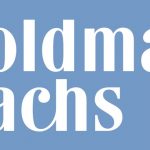C.R. Bard (BCR) is a member of the dividend aristocrats list that has nearly doubled the market’s performance over the last decade.
The company’s dependable business model has resulted in steady earnings growth and dividend increases.
We love buying these types of companies for our Top 20 Dividend Stocks portfolio, but let’s take a closer look to see if Bard makes the cut.
Business Overview
Bard was founded in 1907 and sells more than 15,000 medical, surgical, and diagnostic devices to hospitals and other healthcare institutions. Its products include catheters, stents, ports, grafts and more and primarily focus in the disease areas of vascular (28% of sales), urology (25%), oncology (27%), and surgical specialties (17%). Most of Bard’s medical products are intended to be used one and then discarded, which results in a steady base of revenue.

By geography, about 30% of Bard’s sales take place outside of the U.S., including 10% in emerging markets.
Business Analysis
Bard’s management team has done an excellent job positioning the company’s product portfolio in areas that are priced on value rather than cost.
The company focuses on under-served markets where it can win business by offering more innovative products that deliver better clinical outcomes.
Customers demand extremely high quality and reliability because they use Bard’s medical devices for some of the most demanding and sensitive areas of healthcare.
For example, some of Bard’s products are implanted in seriously ill patients indefinitely – care providers cannot afford for anything to wrong with the device, and Bard has built a reputation for quality over the 100+ years it has been in business.
Most of Bard’s products are also patented, and the company invests over $250 million in research and development activities each year (7-8% of its annual sales) to develop competitive new products such as drug-coated balloons.
Many of the areas Bard focuses on are also characterized by complex regulatory requirements, which help limit competition in some cases.
As a result, over 75% of Bard’s 2015 sales were from products that held a number one or two market share position.
Bard also benefits by being well diversified by product type. The company would not be at risk if any one of its products went away due to new competition or a change in regulations. Many of its products are also recession-resistant because ill patients need to be treated no matter what.
Bard is also investing in faster-growing markets. The company has about a third of its sales reps located in emerging markets, although these regions only account for 10% of Bard’s sales today. The company also has a history of making acquisitions to gain access to new products, technologies, and geographies.

















Leave A Comment